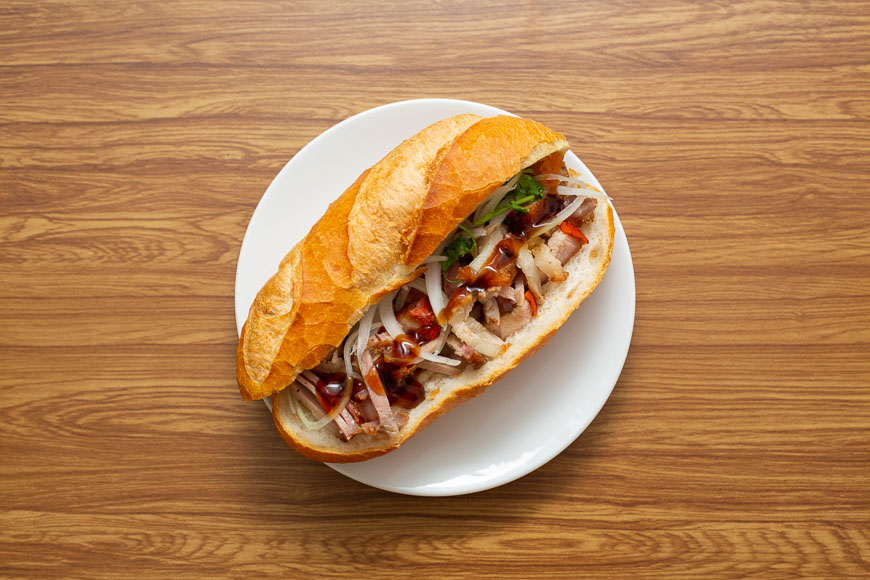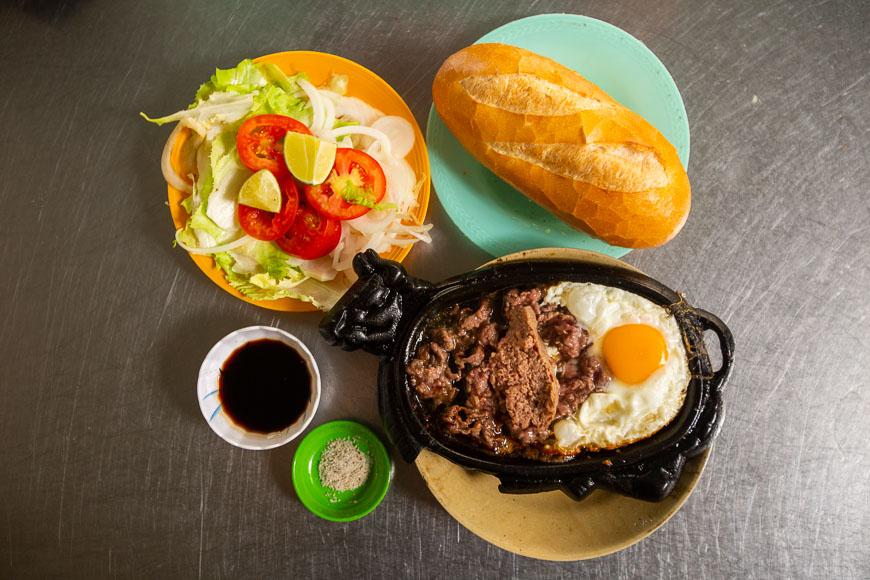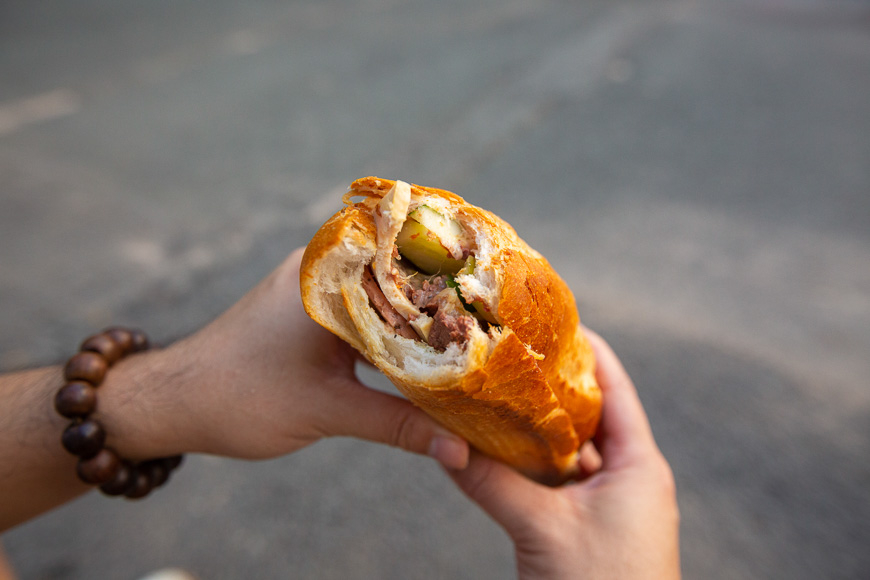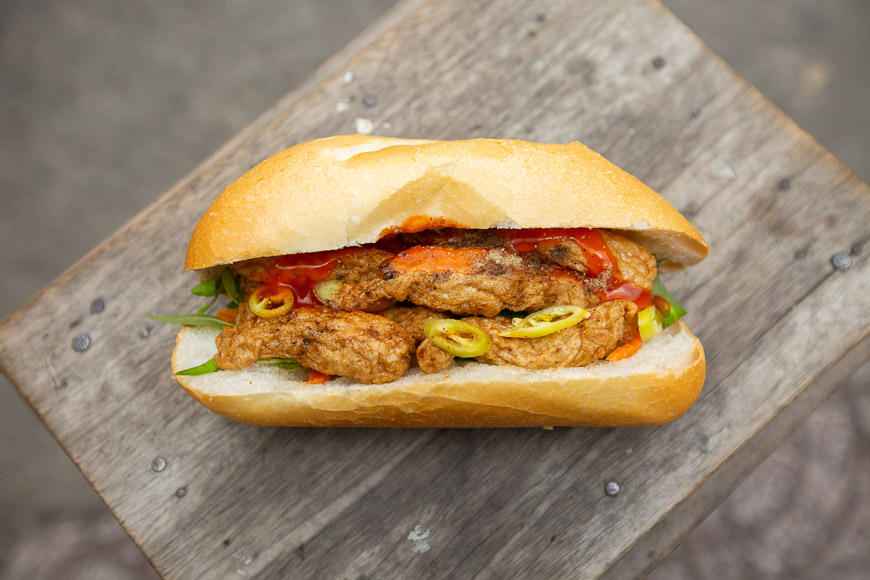When the French baguette arrived in Vietnam more than 100 years ago, no one could have guessed it would change Vietnamese cuisine forever. Bánh mì, the streetside sandwich loved by so many, is now one of the most iconic Vietnamese dishes. But its apparent simplicity is deceptive. Locals have reinvented the staple again and again, in every corner of the country. Exploring the bánh mì scene in Vietnam is one of the tastiest journeys you can take. To get you started, below are seven amazing bánh mì you must try.
Bánh mì sốt vang
A stew of beef and red wine sounds like it belongs in a Michelin-starred restaurant, but like many other great Vietnamese dishes, this can easily be found on the sidewalks of Hanoi. The French-influenced stew is seasoned with cinnamon, star anise, and coriander. Tear off a piece of bread and dip it in the rich, savoury broth. You need to get a little hands on with bánh mì sốt vang. It takes hours to perfect the red wine stew, so family cooks would make a large pot and use it for both bread and phở. Yes, red wine beef stew phở is very much a thing.
Bánh mì heo quay

How much crunchiness is too much crunchiness? Who can say? Certainly not fans of bánh mì heo quay, the roasted pork adaptation of the classic bánh mì. Thick slices of roasted pork belly are wedged inside a crusty loaf, right next to cucumber and pickled turnip. It's a fine balance of textures. A whole street in Ho Chi Minh City is dedicated to bánh mì heo quay, where foodies line up every morning for their favourite breakfast. Think we're overdoing it? Give this sandwich a try and you may reconsider.
Bánh mì bò né

The direct translation of bò né is ‘dodge the beef'. But it’s not the beef that you want to avoid, it's the hot oil splatter from the cast iron skillet on which it's served. Somehow, some Vietnamese found out that sizzling steak is a brilliant companion to a loaf of bánh mì. A bubbling fried egg, some paté, tomatoes and herbs complete the mouthwatering display. Needless to say, a good bánh mì bò né requires some ducking when it first arrives. But you'll learn to maneuver soon enough. When this level of deliciousness is at stake, anyone will.
Bánh mì ốp la
Every food culture has its own version of bread and eggs. In Ho Chi Minh City, it's called bánh mì ốp la, with sunny-side-up eggs and fresh baguette. Bánh mì ốp la is often served on a metal skillet with fried chả lụa (Vietnamese steamed pork sausage wrapped in banana leaves), or the eggs are placed directly into the warm baguette, and padded with papaya and carrot pickles, chili sauce and a drop of soy sauce. In places like Hội An, bánh mì ốp la becomes bánh mì trứng, and is stuffed with freshly sliced lettuce, tomato and cucumber. This bánh mì is a great option for vegetarians who want to sample Vietnam’s most famous snack.
Bánh mì thịt

Bánh mì thịt is proof that you can never go wrong with the classics. Some people like their bread crispy, some prefer soft, but the filling is the real star here. A fully loaded bánh mì thịt consists of several kinds of Vietnamese ham, char siu or fried pork, butter, paté, pork floss, pickled carrots, cucumber, and coriander. A secret sauce ties everything together. Do as the Vietnamese do and enjoy your bánh mì thịt with a cup of bạc xỉu (iced milk coffee) on the sidewalk. It's a must-have Vietnam moment.
Bánh mì chả cá

Fish cakes, originally from the coastal town of Nha Trang, have also made their way into bánh mì. The best fish cakes are characterised by their chewiness and a combination of umami flavours from several types of fish and the spiciness of black pepper. These are fried, then topped with aromatic Vietnamese coriander, and sometimes crunchy cucumber slices, or a garlic and chili soy sauce. These exciting flavours exploding in every bite have earned this bánh mì sandwich a special place among Southerners.
Bánh mì chấm sữa
A lot of Vietnamese grew up with cans of condensed milk sitting in the cupboard. This decadent ingredient was involved in many fantastic treats. Bánh mì chấm sữa, or bread dipped in sweetened condensed milk, is a comfort food that has stood the test of time. Why? Well, fluffy bread soaking up warm, creamy milk is as comforting as it gets! This tried-and-true snack brings back memories of simpler times, when such a high-calorie meal was nothing but delightful.




